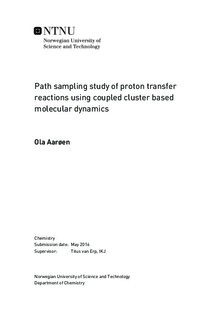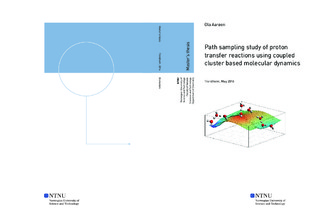| dc.description.abstract | Path sampling techniques have been shown to be very efficient tools to study rare events in chemical reaction simulations.
Sampling techniques are useful when looking at fairly simple reactions as the breaking of a bond in a single Hydrogen molecule, at the denaturation of DNA molecules or the formation of zeolites -- implementing specialized force fields, electron density functionals or ab initio wave function theory.
Electron correlation methods, however, are not as widespread in use when it comes to molecular simulations. They scale very badly with increasing system size and basis set, and they are thus very expensive for the gain in accuracy they provide. They require much more computational resources and time than cheaper methods like density functional theory, a method that is well established in molecular dynamics and sampling studies.
But since electron correlation methods are the most accurate at describing the electronic system, this work attempts to join the advantages of a dynamics algorithm preforming transition interface sampling with coupled-cluster calculations from an external quantum chemistry program. The system studied was the proton transfer reaction in the protonated water-trimer, a relatively small system and simple reaction, which has been studied previously with specialized potentials, density functionals, and perturbation theory.
This work contains the first calculation of the reaction rate, using transition interface sampling simulations on the catalyzed proton transfer reaction in the protonated water-trimer. Also included in this work is the first attempt to harvest reactive pathways using coupled-cluster based molecular dynamics.
Using both a TIS and a RETIS scheme, we calculated a rate of reaction for the catalyzed proton transfer in the protonated water trimer. We also generated two trajectories using the coupled-cluster interface with dynamics, which gave us a reactive pathway for the system. | |

